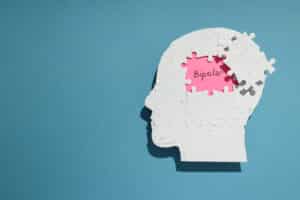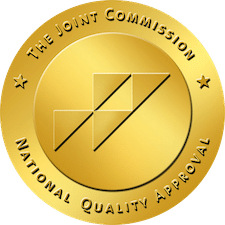One in every five people suffers from some form of anxiety disorder. These numbers are only getting worse in the age of COVID, as anxiety levels have almost doubled to two out of five.
If you’re struggling with worries you can’t seem to shake or other symptoms of anxiety disorders, you’re not alone. These elevated statistics have many people seeking anxiety treatment. Anxiety treatment and a few lifestyle changes can help mitigate the severity of your anxiety.
For many Californians looking for Anxiety Treatment in Sacramento, their best option may be to separate themselves from the environment that is causing stress. Consider heading South to a Mental Health Treatment Center like Southern California Sunrise Recovery.
What Is an Anxiety Disorder?
Many people think that they don’t have an anxiety disorder because they don’t experience frequent panic attacks. While panic attacks are certainly a part of some disorders, they’re not the only symptom.
Some disorders manifest as a constant, low-level anxious feeling. Others manifest with severe peaks of anxiety. Some have both symptoms.
Generalized Anxiety Disorder
Generalized Anxiety Disorder (GAD) is the persistent worry that is clinically significant, which means that it disrupts daily life. While some daily stress and worry are normal, if you have GAD you’ll have a tendency to catastrophize and be overly concerned about issues.
For example, when the monthly bills come due you might find yourself extremely stressed about finances when in reality, you still have solid employment. Or, after fighting once with your significant other you might worry that your relationship is doomed when in reality it’s quite stable.
It’s important to note that GAD worries are unfounded – someone who is unemployed has more of a reason to worry about finances than someone with a stable career.
Furthermore, these worries are uncontrollable. If you can’t talk yourself out of a spiral of anxiety, you might be experiencing GAD.
Sometimes, these worries have no reason behind them. Someone with GAD might wake up and find themselves worried about even getting through the day.
Panic Disorder
This is what many people think of when they think of anxiety. Panic disorder is characterized by repeated episodes of panic attacks.
Panic attacks are moments of intense fear, with severe physical symptoms. Many people say that a panic attack feels like a heart attack. This is because the heart races and the chest tightens.
Symptoms of a panic attack include:
- Hyperventilation
- Shortness of breath
- Dizziness
- Abdominal distress
- Heart palpitations
- Chest pains
- Sweating
- Shaking
- Feelings of being out of control
- Feelings of impending doom
If you find yourself having a panic attack, remind yourself that it’s only temporary and you will be alright. Make a conscious effort to use deep breathing, and ground yourself.
Panic results when your mind thinks something is terribly wrong, and it needs to prepare you for battle or escape. It triggers your fight or flight response. To calm down, you have to show your mind that you’re not in danger by grounding it in reality.
One grounding method is identifying five things you can see, four things you can touch, three things you can hear, two things you can smell, and one thing you can taste.
However, getting through a panic attack is one thing, getting rid of them is another. Panic attacks are symptoms of a larger panic or anxiety disorder, which can be treated with therapy.
Social Anxiety and Phobias
It can be said that GAD is anxiety without a clear cause. In contrast, social anxiety and other phobias are triggered by a specific fear.
For example, after COVID, many people find themselves struggling with social anxiety. This is partly because long lockdowns have left us with minimal social contact. The prospect of interacting with people again can be intimidating.
Furthermore, the last year has had us avoiding social interaction, obsessively cleaning, and reading about increased death rates. All of these experiences can linger as fears of hospitals, germs, and other people. In other words, phobias.
Other phobias are also normal. Common phobias are include flying, heights, spiders, and blood. If they’re debilitating, they might require treatment.
How Is Anxiety Treated?
Regardless of how severe the symptoms, there is always treatment available for anxiety. The specific treatment depends on the specific disorder and patient, but many treatment methods are ubiquitous.
Cognitive-Behavioral Therapy
Cognitive-behavioral therapy or CBT is arguably the best anxiety treatment. CBT finds the negative patterns and distortions present in the mind.
For example, your immediate response to a party invitation might be, “I always make an idiot out of myself, I never know how to act.” This is an example of a negative thought that’s holding you back and contributing to your anxiety.
The second part of CBT is identifying how you react in situations that trigger anxiety. To follow the same example, if you attend a party and feel awkward you might leave immediately, reinforcing the notion that you’re not good at parties.
Your therapist will challenge these perceptions, replacing them with healthy coping mechanisms that allow you to overcome anxiety.
Other forms of therapy include DBT, exposure therapy, group therapy, and hypnosis.
Medication
Medications can relieve physical anxiety symptoms. The specific type of medication depends on the type of anxiety you’re experiencing.
Some medication is a low-level continuous dose of anti-anxiety. This is generally used for disorders like GAD, where a persistent and continuous feeling of fear is the main symptom.
Another type of medication is used only when the disorder spikes. These medications are prescribed for disorders like panic disorder. These short-term medications are useful at the onset of a panic attack and can help you relax by calming the physical symptoms.
Lifestyle Changes
Therapy and medication can be aided with a few lifestyle changes. These might include mindfulness work, such as meditation. You might also have to work on your healthy habits, like getting enough sleep and regular exercise.
How to Get Anxiety Treatment
If you’re looking for a way to live free of anxiety, it’s not as difficult as you might think. The best way to get help for your anxiety is simply to ask for it!
If you find a place that offers local anxiety treatment, reach out and ask for their anxiety management plans, and how they can help you.
Get Anxiety Treatment in Southern California
If you’re looking for anxiety treatment in Sacramento, consider traveling to Southern California Sunrise Recovery Center. We offer a comprehensive treatment plan that can change your life and treat your anxiety disorder so you don’t have to manage it alone. Give us a call today to learn more about our anxiety treatment plans and how we can help you!







